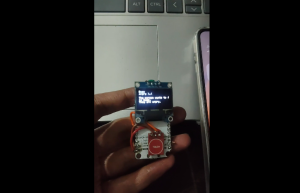Scientists may be learning a bit more about dust beyond our solar system. A Heidelberg-designed dust detector on the Cassini space probe has identified several extremely rare and minuscule particles of interstellar dust.
When researchers study interstellar dust, they largely rely on particles that reach our solar system. The Stardust space probe actually captures particles of the very weak flux crossing our solar system. However, these particles are unusually large, so the findings may not be representative.
"Interstellar dust is one of the last bastions of the unknown in space, its individual particles being only about 200 nanometers in size and very hard to find," said Mario Trieloff, earth scientist from Heidelberg University and one of the researchers involved in the study.
In this case, though, the Cassini probe was able to identify 36 particles of interstellar dust among millions of planetary dust particles. In addition, these particles can be analyzed on the spot with the help of mass spectrometry. This yields more precise results than ever before.
"The result of the measurements was truly amazing," said Frank Postberg, one of the researchers. "The 36 particles of interstellar origin, that are very similar in their composition, contain a mix of the most important rock-forming elements-magnesium, iron, silicon and calcium-in average cosmic abundance. Although a dust particle has a mass of less than a trillionth of a gram, the whole element mix of the cosmos is collected there, with the exception of very volatile gases. Some particles cannot be found in our solar system."
So, what did the dust tell the researchers about the cosmos? Surprisingly, the dust had lost its individuality because it was homogenized in the cosmic, interstellar medium. This medium contains million-degree hot bubbles of supernova explosions, whose edges arise from shock fronts expanding quickly into the universe. It's possible that interstellar dust can survive this energy-rich environment for only a few hundred million years.
The results actually confirm that most dust particles are destroyed and reformed in molecular clouds. Then, interstellar winds bring these particles as homogenized dust into our solar system. While this doesn't tell researchers about the composition of the faraway cosmos, it does tell scientists a bit more about how our universe functions.
The findings were published in the April 15 issue of the journal Science.
© 2025 HNGN, All rights reserved. Do not reproduce without permission.








